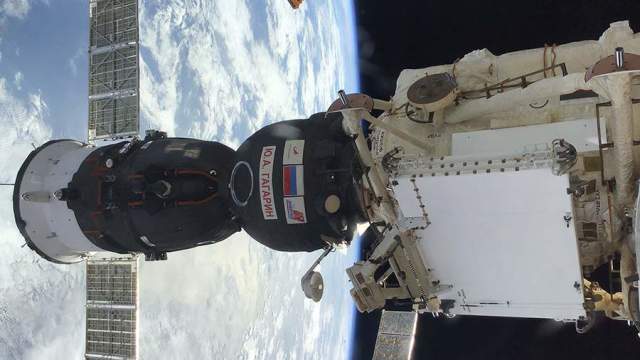The Institute of the Russian Academy of Sciences will test the protection of astronauts from radiation in interplanetary flights on the Science module of the International Space Station (ISS) in 2023, Igor Mitrofanov, head of the Department of Nuclear Planetology of the Institute of Space Research of the Russian Academy of Sciences, told RIA Novosti on September 5.
He noted that the production of a design and finishing sample of scientific equipment BTN-M2 (onboard neutron telescope)-the equivalent of a future flight instrument is now being completed.
"I hope that in 2023 the BTN-M2 flight instrument will be delivered to orbit by the Progress cargo ship and will work on board the ISS," Mitrofanov said.
BTN-M2 will be located inside the station in the multi-purpose laboratory module "Science", which will make it possible to combine measurements of neutron fluxes outside and inside the ISS and build a complete engineering model of the station's own neutron radiation.
In addition to the neutron detector, the flight instrument will also be equipped with a gamma-ray spectrometer for recording gamma-ray fluxes. In addition, the BTN-M2 will have a set of protective screens against neutrons. Astronauts will be able to remove or install them on a device for analyzing the effectiveness of protection and measuring the angular distribution of background neutron radiation in various conditions of space flight.
This will allow us to understand how much it will be possible to reduce the neutron radiation background on board the station with the use of such protective screens.
"This is not very important for the ISS in low — Earth orbit, but for future flights beyond the Earth's magnetosphere, into deep space, where neutrons produced by galactic and solar cosmic rays will be a very serious radiation hazard for the crew," Mitrofanov explained.
Thanks to the research, cosmonauts will be able to offer options for neutron radiation protection right on board the spacecraft, the representative of the Space Research Institute of the Russian Academy of Sciences summed up.
On September 4, Russian cosmonauts Oleg Novitsky and Pyotr Dubrov connected the Russian module "Science" to the American power supply on the ISS. They also had to mount the swing handrails and connect an Ethernet cable to the Nauka module in seven hours of work in outer space.
The Nauka module was launched from the Baikonur Cosmodrome on July 21, and docked to the ISS on July 29. Novitsky informed the specialists of the Mission Control Center near Moscow about the unplanned engines of the module. Soon the astronauts managed to turn them off.
To eliminate the loss of orientation of the ISS, it was necessary to turn on the engines of the Zvezda module and the Progress MS-17 cargo ship docked to the Poisk module.

